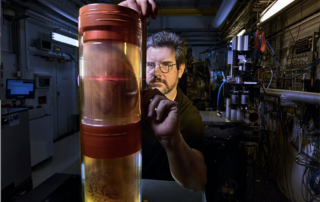World’s brightest x-rays reveal COVID-19’s damage to the body
Source: National Geographic Date: January 26th, 2022 Author: Michael Grashko Featured Image by National Geographic: The Human Organ Atlas project, an international team including ESRF staff scientist Paul Tafforeau, has used HiP-CT to scan the organs of COVID-19 victims, including their brains. HiP-CT scans can zoom in from a whole-organ scan to provide a cellular view of regions of interest. When Paul Tafforeau saw his first experimental scans of a COVID-19 victim’s lung, he thought he had failed. A paleontologist by training, Tafforeau had been laboring with a team strewn across Europe for months to turn a particle accelerator in the French Alps into a revolutionary medical scanning tool. It was the end of May 2020, and scientists were anxious for a better view of the ways human organs were being ravaged by COVID-19. Tafforeau had been tasked with developing a technique that could make use of the powerful x-rays generated at the European Synchrotron Radiation Facility (ESRF) in Grenoble, France. He’d pushed boundaries on high-resolution x-rays of rock-hard fossils and desiccated mummies as an ESRF staff scientist. Now, he was dismayed by a lump of soft, squishy tissue. But when his colleagues caught their first glimpse of the lung scans, they felt something else: awe. The images presented them with richer detail than any medical CT scan they’d seen before, allowing them to bridge a stubborn gap in how scientists and doctors can visualize—and make sense of—human organs. “In anatomy textbooks, when you see, This is the large scale, [...]


